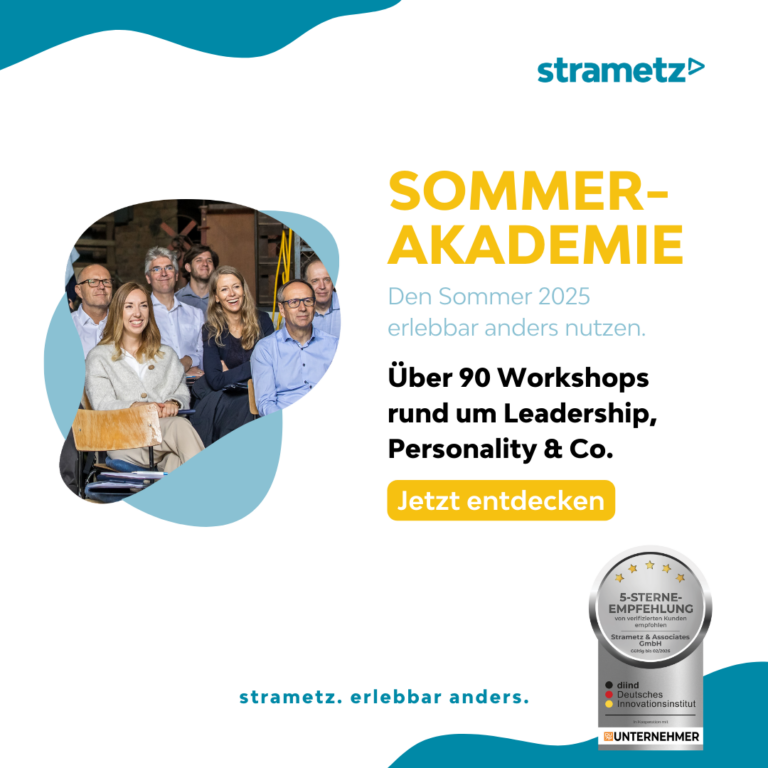A guest article by Anne M. Schüller
The future is approaching at breakneck speed. Agilization is therefore becoming increasingly urgent in traditional organizations. After all, the more cumbersome an organization, the more susceptible it is to overtaking. And groundbreaking news comes along every month today.
In times of exponential change, all business models are only temporary anyway. And remodeling is permanent. There are no blanket recipes for this. Rather, suitable procedures must be jointly developed, tested, adapted, further developed, and even discarded as quickly as possible if necessary. And above all, ambidextry.
Ambidextriousness: The ability to act in “both and”.
Organizational ambidexterity, loosely translated as ambidexterity, describes the ability of companies to operate in “both and”. On the one hand, old-school organizations need to develop startup qualities, for example, moving innovatively, quickly and with an affinity for risk in the market. On the other hand, it is important to secure the earning power of its core activities in order to be able to meet its many obligations.
To do this, it’s best to start by making only a subarea of your company the field of experimentation. Disruption always starts in a niche or at the edges of an organization. Here, for example, small, agile, self-organized units are used, which can be set up quickly in suitable areas.
Nevertheless, you also have to look at the business organization as a whole. This is because the usual pyramidal top-down organizational charts are internally focused. They focus on power rather than the market. They cement hierarchical thinking, rigidity and conformity. They don’t stand a chance in the digital storm. So here are the 7 tips:
1. change your company organization
This is the biggest step a classic company has to take: from a pyramid to a network organization. And we did it with a lot of vehemence and during ongoing operations. This first requires an executive decision. After that, a project group has to be installed to deal with the individual steps.
Above all, get rid of the image of a classic top-down organizational chart with its silo and box thinking as quickly as possible. Employees do not even appear in such organizational charts. And even companies that claim to be customer-focused don’t have the customer on their organizational chart. How can you talk about customer centricity?
2. work together on your corporate culture
The corporate culture determines the way we interact with each other. It is essential that all employees are part of the system and therefore contribute to the corporate culture. The goal is that everything that poisons a company’s atmosphere disappears as quickly as possible, so that a human and at the same time positive basic mood can take hold.
Next, low-hierarchical approaches need to be addressed. Purely instruction-oriented leadership must disappear as quickly as possible, and self-organized team structures must take its place. Openness and the will to implement fresh ideas from the ranks of the younger generation are particularly welcome here, because they make a company fit for the future.
3. get the best young talent on board
“Young people are becoming increasingly difficult to integrate into our working world,” managers often whine to me. “But we’ll beat that out of them.” But that’s exactly what won’t work. Of course, ambitious Millennials don’t lend themselves well to being shoehorned into an antiquated work environment, and why should they? Above all, it needs a good start to secure the best talent.
Therefore, start quickly to develop a Candidate Journey, i.e. a prototypical “journey” through an applicant-oriented recruiting process. Many touchpoints, the points of interaction with candidates, need to be modernized, optimized and freed from bureaucratic standard processes. Here, too, representatives of the younger generation are the first choice to support you.
4. introduce a reverse mentoring program
When it comes to digital achievements, the latest technological trends, the buying behavior of the younger generation and contemporary working conditions, Millennials are in their element. In reverse mentoring, the roles of classic mentoring are reversed: The junior coaches the senior on the topics that the “young” can do better than the “old”.
The primary goal is to increase digital fitness within the company, adapt old-established communication and working methods to the requirements of the digital era, and familiarize older colleagues and managers with the lifeworld of Millennials. A good match between mentor and mentée is extremely important for the whole thing to run smoothly. Overall, reverse mentoring is an excellent tool for building a learning organization.
5. implement a minus50 program
In addition to a lack of innovation, it is above all a huge bureaucratic and administrative apparatus that increasingly prevents conventional companies from acting in an agile manner. This is the fastest place to make a difference. Tomorrow, entrust the first employees with the task of identifying and dismantling rules, standards and procedures that hinder, demotivate and destroy turnover.
Or organize a kill-a-stupid-rule workshop on a large scale to eliminate everything unnecessary as quickly as possible and replace it with better, simpler, more modern ways of doing things. Of course, you can’t do it completely without structures and rules, which is why plus/minus 50 is a reasonable target figure. Decisive indications can also come here from committed young employees.
6. install a digital storm troop – cross-functional
The current discussion about where digitization should be located remains stuck in silo thinking, and that is precisely a serious mistake. Rather, under the leadership of a Chief Digital Officer, install a digital task force that acts as an internal challenger across departments. To do this, also familiarize yourself with new working tools such as Design Thinking, Scrum and Kanban.
These methods are not only suitable for the digital economy. They are now used in a wide variety of industries and support self-organized work there in many areas. In addition, organize hackathons: This neologism made up of hack and marathon refers to the concentrated joint solution of (digital) tasks within a specified period of time.
7. organize a disrupt-me workshop
This measure is about self-disruption: what will be replaced and disappear next is the crucial question. Those who think they are invulnerable have already lost. So take advantage of good times to keep them good. Before you are attacked, you had better attack yourself, at least as a theoretical exercise. This way, you can pinpoint your sore spots before others do.
Actually taking the step to self-disrupt can be a crucial foundation for opening up future business areas. This involves the targeted launch of products that can compete with existing products. The major pioneers of the global digital economy in particular are constantly addressing this issue to avoid being disrupted by even younger, better attackers.
First the quick wins, then the big wins
Instead of getting bogged down in monstrous transformation projects, I recommend just getting started in a corner to produce some quick wins, quick units of success. This gives us the courage to tackle the next, already larger conversion activities. Quick wins are fitting stepping stones that lead straight to the Next Economy.
By the way, “Fit for the Next Economy” discusses in detail how you can achieve the individual steps mentioned. Of course you can also book me as a speaker or workshop leader to bring drive into the company and pave the way for the future.
Author:
Anne M. Schüller
For further interesting insights please have a look at our news section










